The Philippines as an archipelago (7,000 islands!) is surrounded by water, from West to Northwest is the South China Sea to the Southwest Sulu Sea. The extensive coastline and numerous waterways provide readily available and accessible food sources from coastal communities. Which is why as a Filipino being told that our cuisine is brown, ugly and fatty gets me frustrated and turns on the hulk in me. Why? Because I know better.
It’s a common misconception and a stereotype. While some popular Filipino dishes are indeed rich and brown (often due to soy sauce, vinegar, and long cooking times), this portrayal significantly overlooks the many other aspects of the Filipino cuisine.
Many people outside the Philippines have limited exposure to the full spectrum of Filipino food because maybe they only encounter the more widely exported or popularised dishes.
This is my WHY.
Tortang Alimasag (blue swimmer crab) is another omelette dish popular in the Philippines. Typically it is a simple omelette with crab meat, sauted with potatoes, tomatoes, onions and pan fried like a regular omelette.
Alimango (mud crabs) which is the hunkier cousin of the blue swimmer, is commonly used for this type of dish - where the picked crab meat is stuffed back into the shell and then fried.
Traditionally, tortang alimango includes potatoes as an extender, to make the dish more substantial. Because crabs can be relatively expensive or not always available in large quantities. Adding potatoes, which are more affordable and readily available, helps to bulk up the omelette, making it a more filling meal.
TORTANG ALIMASAG. A labour of love and self control! That moment of carefully extracting the sweet, succulent morsels from the shell is incredibly tempting. Each little piece feels like a reward for your effort, and the urge to pop it straight into your mouth is strong!
This dish is definitely not for your weeknight repertoire, but something you can pull off for special occasions. Because to make this dish takes extra effort than your regular omelette. But the result is a dish that spells L-O-V-E.
I am on a meatless for lent challenge and to make it more fun and exciting in this space, I’ll be sharing Filipino classic dishes that are fish and vegetable based to show a wider audience that our cuisine is not just about the sisig, adobo and lechon!
Ingredients
4 blue swimmer crabs
3 eggs, beaten
1 piece sweet potato*
3-5 pieces garlic cloves, minced
1 small onion, cubed
2 medium sized tomatoes, cubed
1 celery stalk, chopped finely
1 tablespoon cornstarch
100 ml any neutral cooking oil
Salt and pepper to taste
Method
Cook the crabs! Using a large deep pan/pot or wok, add about 250 ml water then add the fresh crabs. Let it simmer for 10-15 minutes with the lid on.
Cool the crabs! Once the crabs are cooked, place them in a tray and let them cool before extracting the meat.
Extract the crab meat! Read notes on how to extract crab meat from the shell.
Set aside the crab shell.
Cook the stuffing. Using a medium sized pan, add 2 tablespoons of the oil then add the sweet potato. Cook while stirring for about 5 minutes. Add the garlic, onion, tomatoes and celery and stir. Add the crab meat, stir the mixture to evenly distribute the stuffing in the pan.
Using a medium sized mixing bowl, add the cooked crab mixture in the bowl with the eggs and cornstarch and mix with a spoon or spatula.
Cook the Tortang Alimasag! Using a large frying pan, turn heat to medium and add the rest of the cooking oil. Let the oil heat up to 150*C - test this by dropping a piece of bread which should instantly create bubbles in the oil and brown the bread.
Grab a piece of crab shell, then spoon the crab mixture into the shell, making sure to fill in the sides and the corners. Do not overstuff.
Place the tortang alimasag in the hot oil, crab shell down first. Let this cook for a minute or two, then flip to brown the stuffed side. Cook until just slightly golden. Remember you’re only cooking the egg mixture as the crab filling is already cooked. Repeat with the rest of the crabs.
If you have leftover crab mixture, simply scoop them with a spoon and cook like small patties.
Arrange the tortang alimasag in a platter and garnish with chopped spring onions or a sprig of coriander.
Best eaten with steamed rice and a side of banana catsup/ketchup.
Notes:
Sweet potatoes in Australia are massive, typically a regular grocery or veg shop variety will be 10-12 cm. To gauge the size, use a piece that’s the size of your fist. Use potatoes if preferred, or carrots.
Banana catsup/ketchup is a condiment served with many Filipino fried dishes. It is sweeter than regular tomato sauce/catsup and is made of banana flour with colouring.
Jar or canned crab meat may be used, but the flavour will not be the same as most of these are brined or preserved with salt.
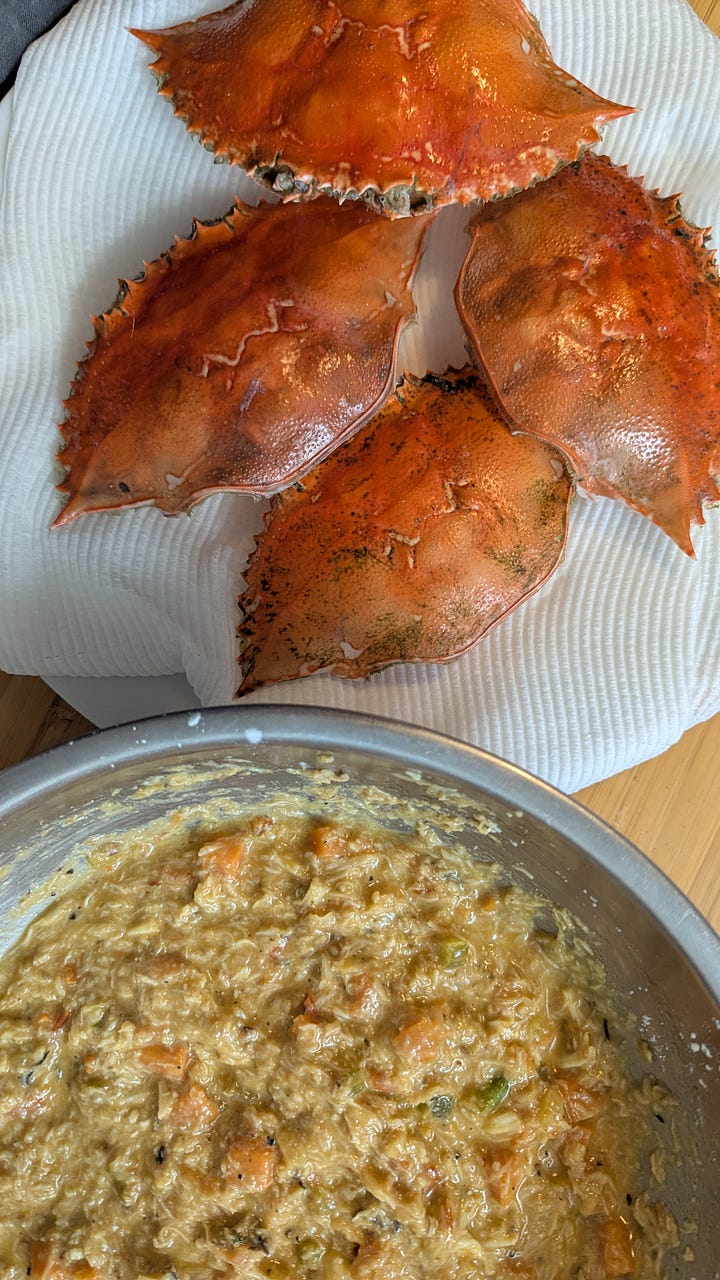
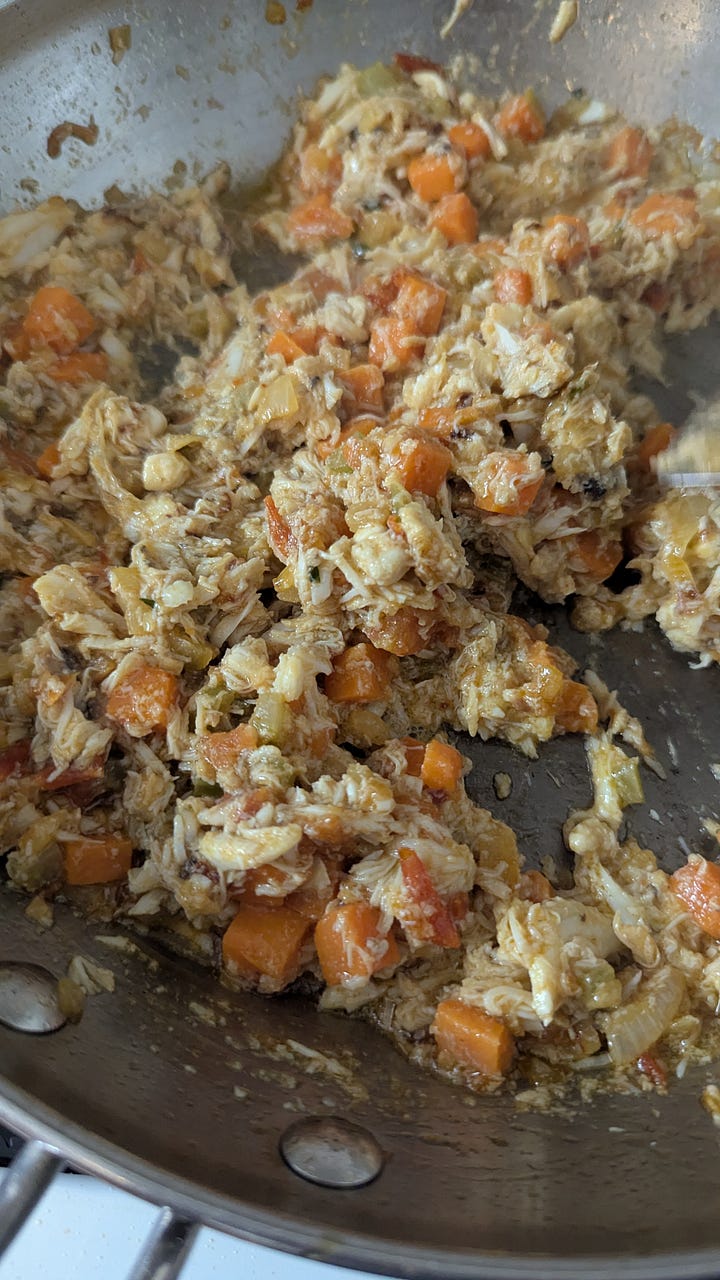
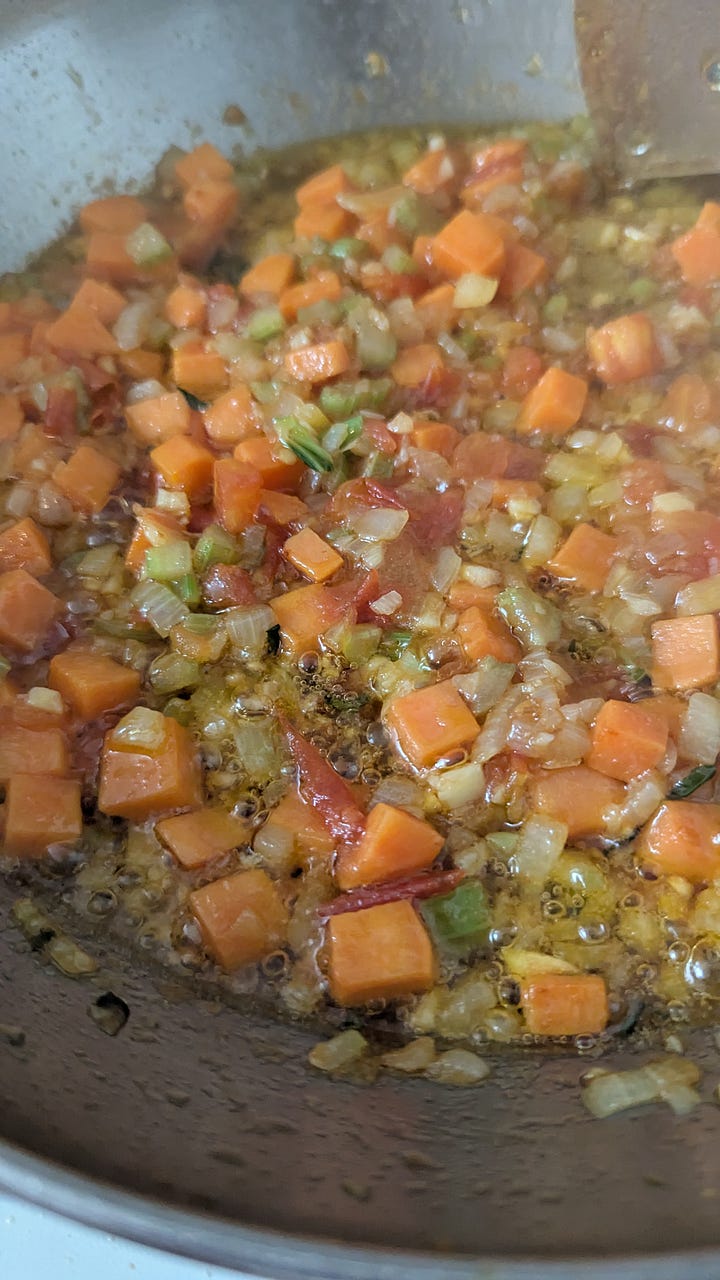
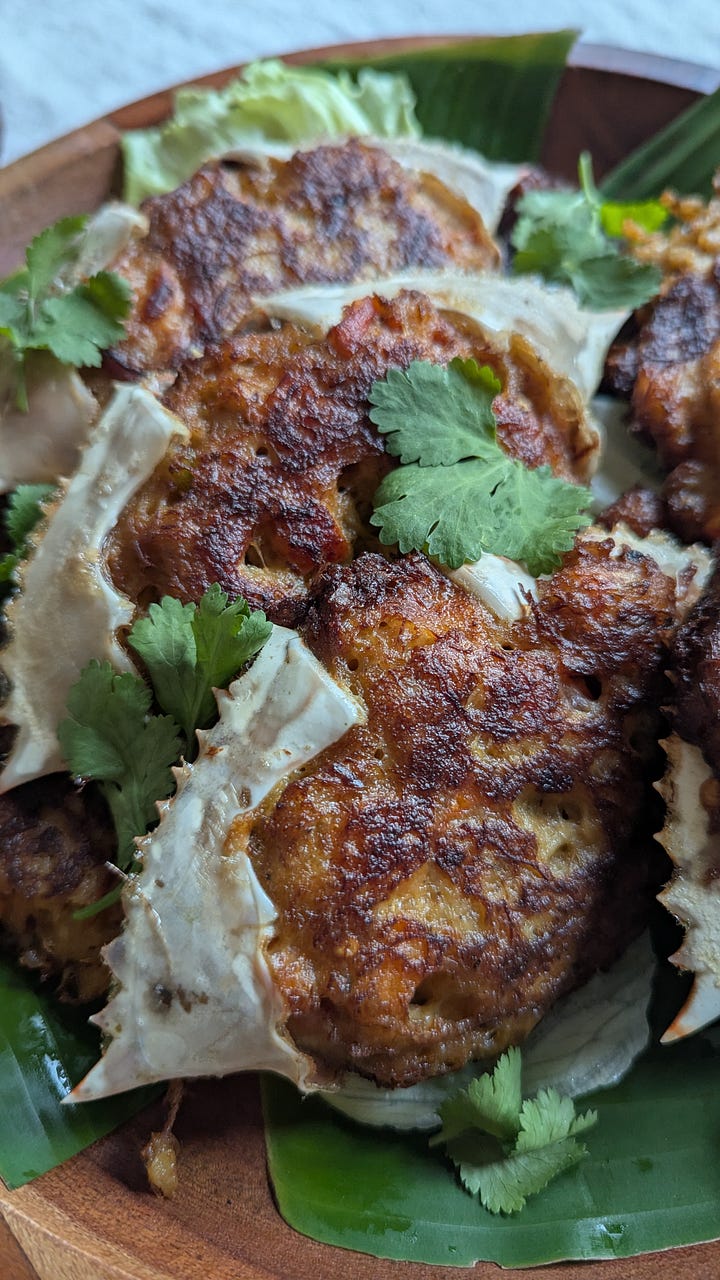
HOW TO EXTRACT CRAB MEAT
Do this only once the crabs are cooked and cool enough to handle.
Using your hands, remove the crab’s apron/skirt which is the triangle piece at the bottom of the crab, by pulling it upwards releasing the crab’s top shell.
Remove the roe or tomalley (orange and yellow and set aside.
Pull the soft appendages - crab gills and discard.
Crack the crab into two then pick the crab meat in the body. Use a pestle or crab cracker to extract meat from the claws and crab legs.
Place all the extracted crab meat in a bowl.
The brown and fatty stereotype is an oversimplification of Filipino cuisine. It presents a picture of the food that is far too basic, incomplete, and inaccurate compared to the actual complexity and variety that exists.
Think of it like describing music. Saying all music is "loud and instrumental" would be an oversimplification. It might describe some types of music, but it completely ignores genres with vocals, quiet melodies, and a vast range of instruments and styles. Similarly, "fatty and brown" only captures a small segment of Filipino food while overlooking its broader spectrum of ingredients, cooking methods, flavours, and regional variations.
After my Camino trip in June 2024, I embarked on a solo food trip to San Sebastian and dined at Zelai Txiki one of the many Michelin spots in this region. And I had this dish - Txangurro a la Donostiarra! A classic and traditional Basque dish.

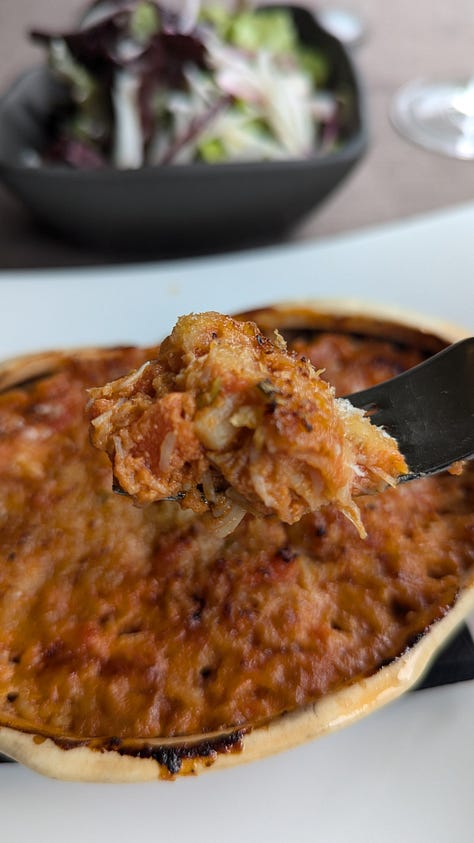

Same same, but different. While both dishes use seafood and eggs, they are distinct in their main ingredients, preparation methods, flavour profiles, and culinary traditions. Tortang alimasag is a Filipino adaptation of an omelette highlighting the fresh taste of local crabs, while txugurro is a more elaborate baked dish from the Basque region featuring spider crabs and a richer set of ingredients. Both equally a labour of LOVE.






Ang ganda naman tignan at napaka-presentable kapag nilalagay sa shell! xD At tama, bagay talaga ang cilantro. Kapag nga ako ang kumakain, hindi na ito garnish, almost side-dish ko na sya dahil sa dami ng ginagamit ko haha. Masarap din ito kasabay ng green mango salad, o kaya simpleng green papaya salad at syempre madami ding cilantro. Adik ako sa cilantro. Grabe nakakagutom.
Mabuhay!
Hi Anna. I am based in UK. I think blue swimmers are available here but would the flavour be massively affected if I used Dorest or Atlantic crabs which are quite common in fishmongers around London. Hoping to try and recreate the dish as effortlessly as you make it sound. (My experience of cooking, prepping and squirelling out crab meat suggests setting aside an afternoon to undertake it properly is de rigeur!) Salamat